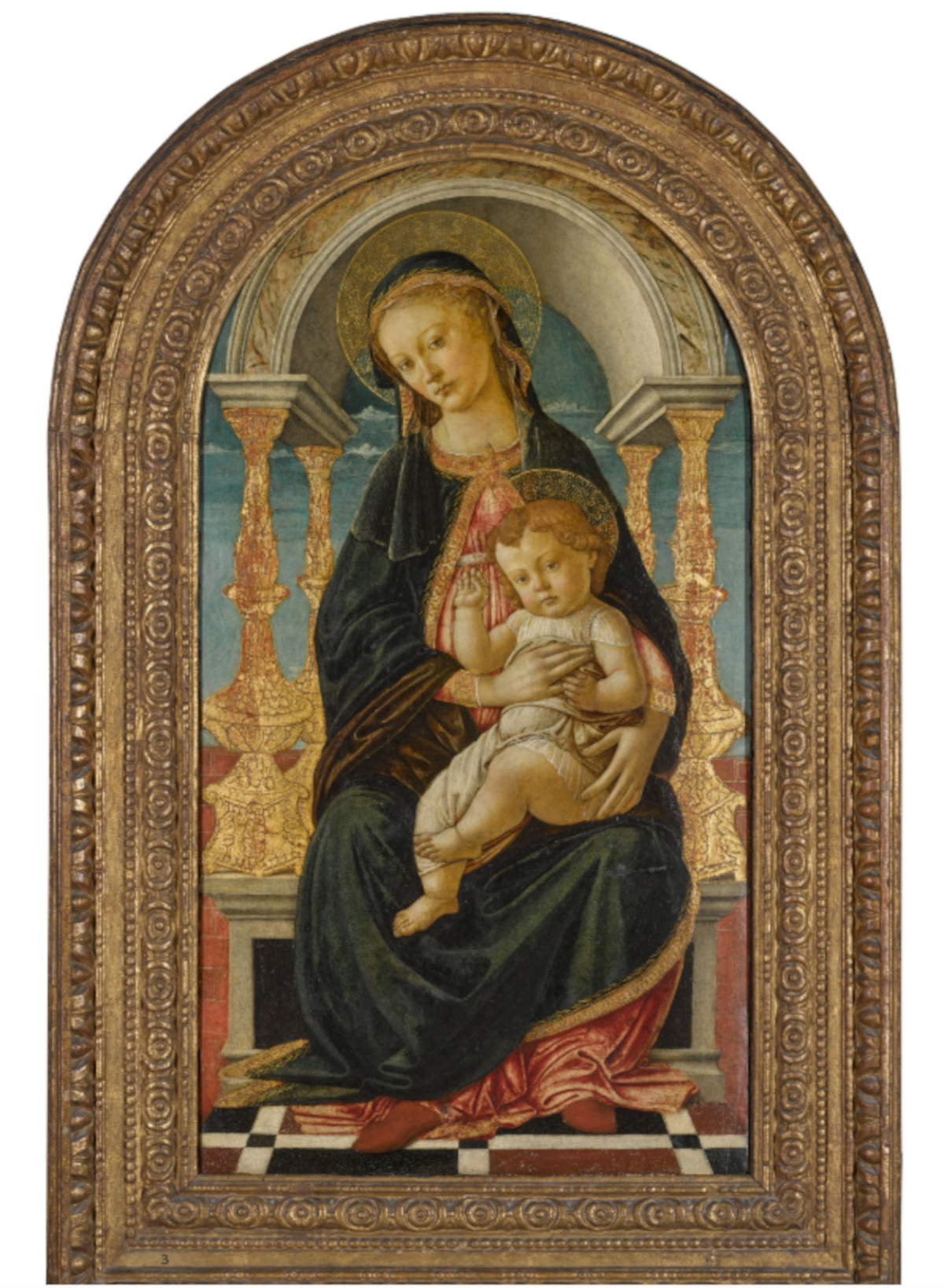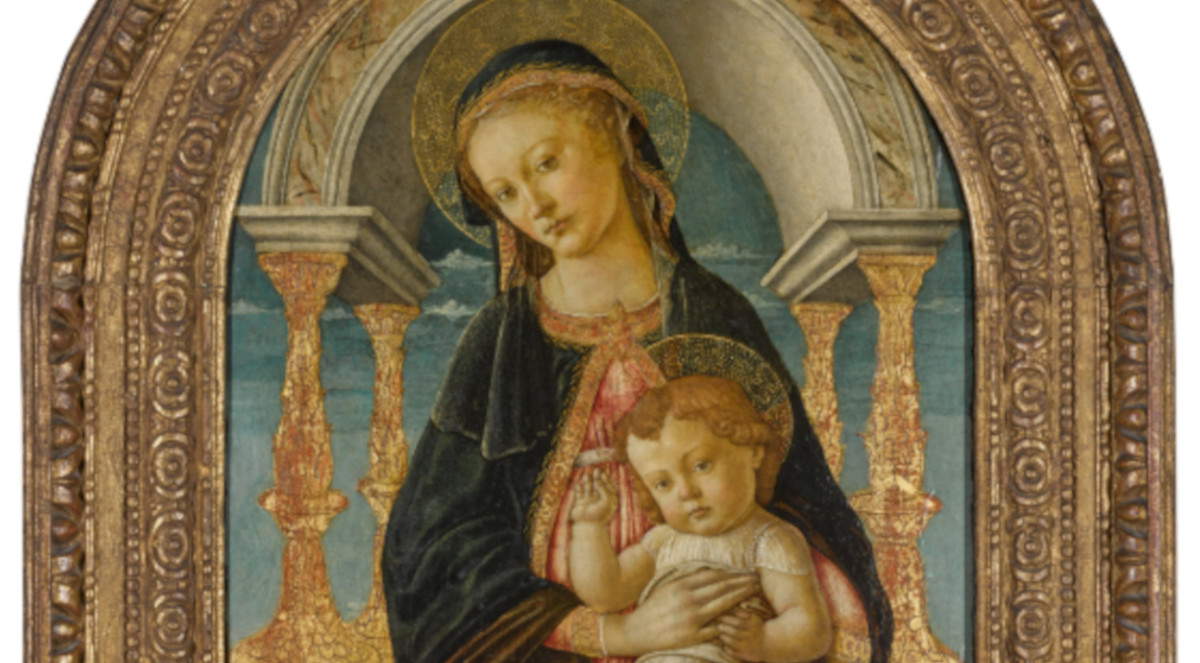The British government has imposed a temporary export ban on a Sandro Botticelli painting in an effort to prevent the work from leaving the United Kingdom. The ban aims to provide time for a gallery or national institution to acquire the Virgin and Child Enthroned by the famous Florentine painter. Acquisition by a British cultural institution would be a significant enrichment to the corpus of Botticelli works in UK collections. There are in fact very few early works by Botticelli in the United Kingdom, so the acquisition of the work in question would provide a richer and more detailed understanding not only of the Italian artist’s painting but also of the development of Florentine painting in the late 15th century.
The painting, which depicts the Virgin Enthroned with Child, has been valued at more than £10.2 million (£9,960,000 plus VAT) and is believed to have been painted in 1470, early in Botticelli’s career
The work already reveals in nuce Botticelli’s ability to combine the expressive delicacy, extreme attention to detail rendering and powerful spiritual intensity found in his most famous paintings. Indeed, in the face of the Virgin there are similarities in the shape and angle of her face with the Venus in the Primavera of the Uffizi, painted in the late 1570s and early 1580s. Special attention can also be seen in the rendering of the Virgin’s features and luministic rendering.
“This painting is a perfect example of Botticelli’s genius and a unique piece of history,” said Minister for Creative Industries, Arts and Tourism Sir Chris Bryant. “I hope that a UK gallery will be able to save this work so that it can be enjoyed by the public for generations to come.”
“Dating from the early 1570s, this touching devotional work demonstrates the sophistication of Botticelli’s painting at the beginning of his career in Florence. Likely intended to inspire private prayer in a domestic setting, it is an image that has wider resonance as it delicately explores the power of maternal love,” commented Christopher Baker, member of the Review Committee on the Export of Works of Art and Objects of Cultural Interest (RCEWA). “The cult or enthusiasm for Botticelli, of which it was a part, grew during the Victorian era and the painting came to Britain in 1904; it was purchased by Lady Wantage and became part of the renowned Lloyd collection,” Baker explained. “Further research into the placement of Botticelli’s work over the course of his career and the organization of his workshop, as well as the links to the broader context of Florentine Renaissance art, would be enormously helpful,” he concludes. “In light of these fascinating possibilities, every effort should be made to try to secure this fascinating painting for a British collection.”

The Committee found that the painting met the third Waverley criterion, recognizing its exceptional relevance to the study of Western art, artistic practice in Renaissance Florentine workshops, and the history of collecting in the United Kingdom.
As a result of this assessment, a temporary ban on the work’s export license was imposed, valid up to and including August 8, 2025. At the end of the first deferral period, the owners will have 15 working days to consider any offers to purchase the painting at the recommended price of £9,960,000 (plus VAT of £272,000, which can be recovered from an eligible institution). The second deferral period will begin following the signing of an Option Agreement and will last for six months. The minister may also consider offers, where appropriate, from public entities at a lower price than recommended through private sale agreements, which are often advantageous to public institutions.
In the early 19th century, the painting was located in the Oratory of San Giuliano at the Convent of San Giuliano in Florence. Later, it was placed in the chapel of a convalescent home for sick brothers of the Order of Calasanziani, in Comezzano, near Vaggio, Figline Valdarno, in the province of Florence. By inheritance, the painting then passed to the Graziani family, remaining in the same location until about 1900. It then entered the collection of Giovanni Magherini Graziani (1852-1924). In November 1903 it was sold to art dealer Elia Volpi, Florence; in May 1904 it was purchased by Harriet Sarah Jones Loyd, Lady Wantage (1837-1920). And through descendants, the painting ended up in Lockinge House, Wantage, and after 1944 in Betterton House, near Wantage, Berkshire.
In December 2024 it was sold at auction by Sotheby’s in London.
 |
| British government imposes temporary export ban on an early masterpiece by Botticelli |
Warning: the translation into English of the original Italian article was created using automatic tools. We undertake to review all articles, but we do not guarantee the total absence of inaccuracies in the translation due to the program. You can find the original by clicking on the ITA button. If you find any mistake,please contact us.